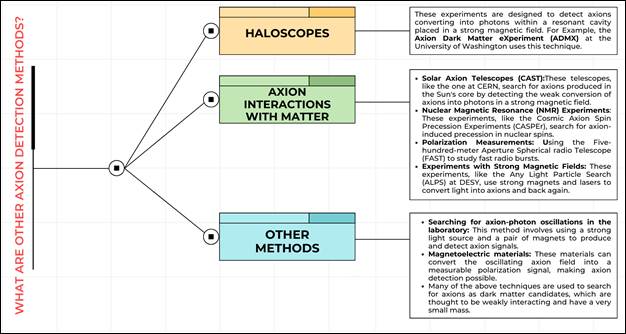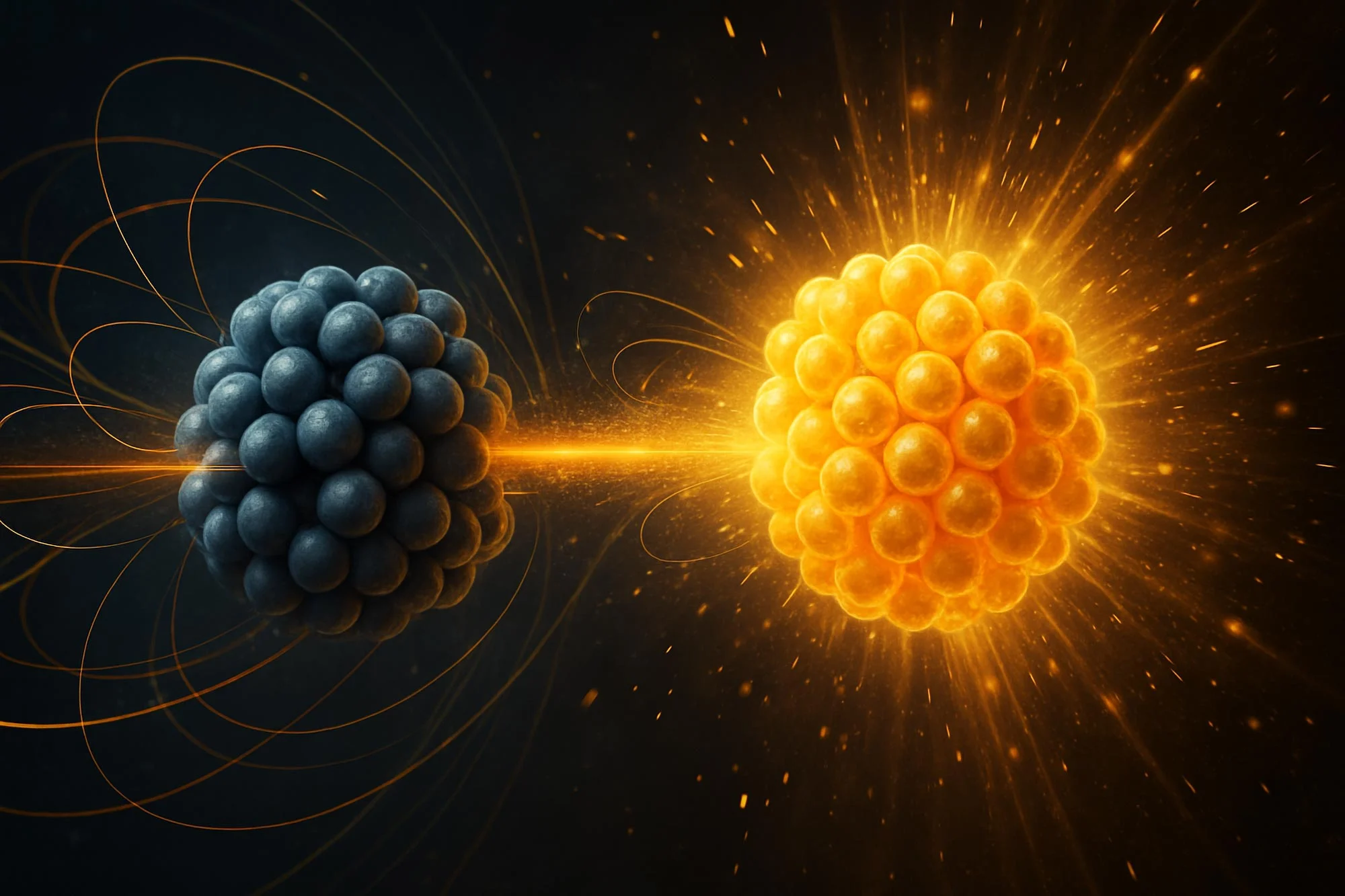- Courses
- GS Full Course 1 Year
- GS Full Course 2 Year
- GS Full Course 3 Year
- GS Full Course Till Selection
- Online Program
- GS Recorded Course
- NCERT (Recorded 500+ Hours)
- Polity Recorded Course
- Geography Recorded Course
- Economy Recorded Course
- AMAC Recorded Course
- Modern India, Post Independence & World History
- Environment Recoded Course
- Governance Recoded Course
- Science & Tech. Recoded Course
- International Relations and Internal Security Recorded Course
- Disaster Management Module Course
- Ethics Recoded Course
- Essay Recoded Course
- Current Affairs Recoded Course
- CSAT
- 5 LAYERED ARJUNA Mentorship
- Public Administration Optional
- ABOUT US
- OUR TOPPERS
- TEST SERIES
- FREE STUDY MATERIAL
- VIDEOS
- CONTACT US
Results of the HAYSTAC Phase II search for dark matter axions
Results of the HAYSTAC Phase II search for dark matter axions

Significance: GS III; Science and Technology; Particle Physics;
Why in the News?
The HAYSTAC team (Phase II) recently published the paper, expressing the results of the widest search for ‘Axions’ so far. They used a special method called ‘Quantum Squeezing’ to reduce random quantum noise, making their detector more sensitive and improving their chances of finding axions.
|
What are Axions?
|
What is HAYSTAC?
- The HAYSTAC experiment (Haloscope At Yale Sensitive To Axion Cold Dark Matter) is a collaborative initiative between Yale, Berkeley, and Johns Hopkins Universities.
- Haloscope detectors like HAYSTAC are uniquely designed to search for dark matter axions in the galactic halo by detecting their conversion to microwave photons inside a resonant cavity within a strong magnetic field.
- In its Phase II, HAYSTAC conducted the widest frequency search for dark matter axions to date. It introduced quantum squeezing techniques to reduce quantum noise, thereby enhancing the sensitivity of its haloscope detector.
- The HAYSTAC experiment and Advanced LIGO are currently the only two major physics experiments utilising Quantum Squeezing to improve precision in measurements.
-
- ‘Quantum squeezing’ involves manipulating the uncertainty in quantum states to suppress random fluctuations, which improves the signal-to-noise ratio in weak signal detection, especially important for identifying rare particles like axions.

How HAYSTAC’s Haloscope Differs from Other Axion Detection Methods and is more futuristic?
|
Feature |
HAYSTAC Haloscope Approach |
Other Axio Detection |
|
Detection Principle |
Searches for axions converting into microwave photons in a strong magnetic field using a microwave cavity (haloscope). |
Other methods include helioscopes (detect axions from the sun), light-shining-through-wall experiments, and astrophysical observations. |
|
Instrument |
Uses a tunable microwave cavity placed in a powerful magnetic field (haloscope). |
Helioscopes use telescopes and magnets; other lab experiments use lasers or detectors for indirect effects. |
|
Signal |
Looks for resonant conversion of axions into photons at specific frequencies determined by axion mass. |
Helioscopes search for X-rays from solar axions; other methods look for changes in polarization or missing energy. |
|
Noise Reduction |
Employs advanced quantum techniques like quantum squeezing to reduce quantum noise and improve sensitivity. |
Most other methods do not use quantum squeezing; they rely on traditional noise reduction or background subtraction. |
|
Frequency and Range |
Tunable cavity allows scanning a wide range of possible axion masses/frequencies. |
Other methods may be limited to certain energy ranges or specific axion properties. |
|
Did you know the challenge with HAYSTAC Haloscope Approach? It requires cryogenic temperatures to suppress thermal noise and maximize sensitivity. While other methods do not require such maintenance of low temperature. |
||
What are the key observations made by HAYSTAC Phase I and II?
|
Phases |
Observations |
|
HAYSTAC Phase I |
(Technologically, it was notable for achieving near-quantum-limited sensitivity by operating at very low temperatures and using a Josephson parametric amplifier) |
|
HAYSTAC Phase 2 |
No axions were detected but it set new exclusion limits on axion-photon coupling. HAYSTAC Phase II represents a significant technological and scientific advance in the search for axion dark matter, pushing the boundaries of sensitivity and experimental technique in the field of particle astrophysics. |
What are the potential implications if axions are eventually detected?
- Identification of Dark Matter: Axions are one of the leading candidates for dark matter. Their discovery would reveal the true nature of dark matter, which makes up about 85% of the universe’s matter content but has so far remained invisible and undetected by conventional means.
- New Physics Beyond the Standard Model: Finding axions would be direct evidence of physics beyond the Standard Model, opening the door to new theories and possibly new particles or forces.
- Solution to the Strong CP Problem: Detecting axions would confirm the Peccei-Quinn theory, providing a solution to the strong CP problem in quantum chromodynamics (QCD), which asks why the strong nuclear force does not violate certain symmetries as expected.
- Advancements in Quantum Measurement: The techniques developed (like quantum squeezing) for axion searches could be applied to other areas of physics and quantum technology, improving the sensitivity of future experiments.
- Impact on Cosmology and Astrophysics: Confirming axions as dark matter would reshape our understanding of the universe’s structure, the formation of galaxies, and the evolution of cosmic history.
|
PYQ Relevance: Prelims: In the context of modern scientific research, consider the following statements about ‘IceCube’, a particle detector located at South Pole, which was recently in the news: (UPSC CSE 2015) 1) It is the world’s largest neutrino detector, encompassing a cubic kilometre of ice. 2) It is a powerful telescope to search for dark matter 3) It is buried deep in the ice. Which of the statements given above is/are correct?
Mains:
|
|
Also Read |
|
UPSC Foundation Course |
|
| UPSC Monthly Magazine | CSAT Foundation Course |



